On January 14, 1514, Pope Leo X issued a papal bull against slavery.
On the same date in 1639, the first written constitution to create a government, the “Fundamental Orders,” was adopted in Connecticut.
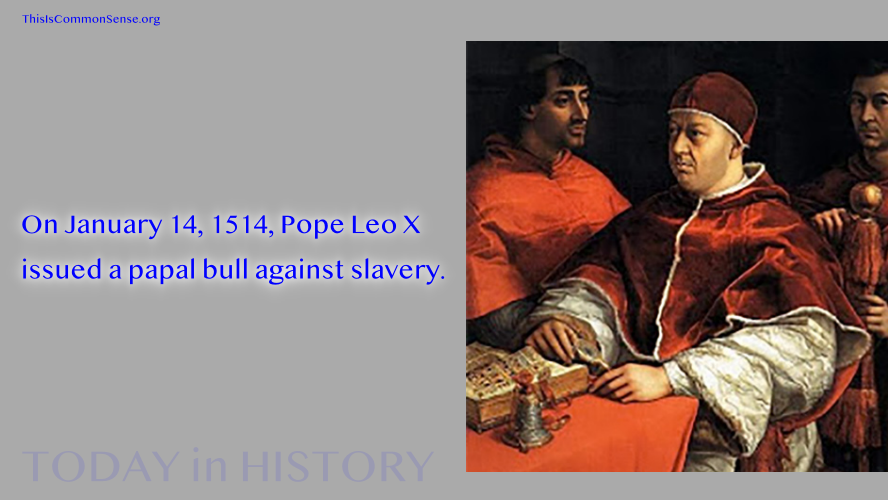
On January 14, 1514, Pope Leo X issued a papal bull against slavery.
On the same date in 1639, the first written constitution to create a government, the “Fundamental Orders,” was adopted in Connecticut.
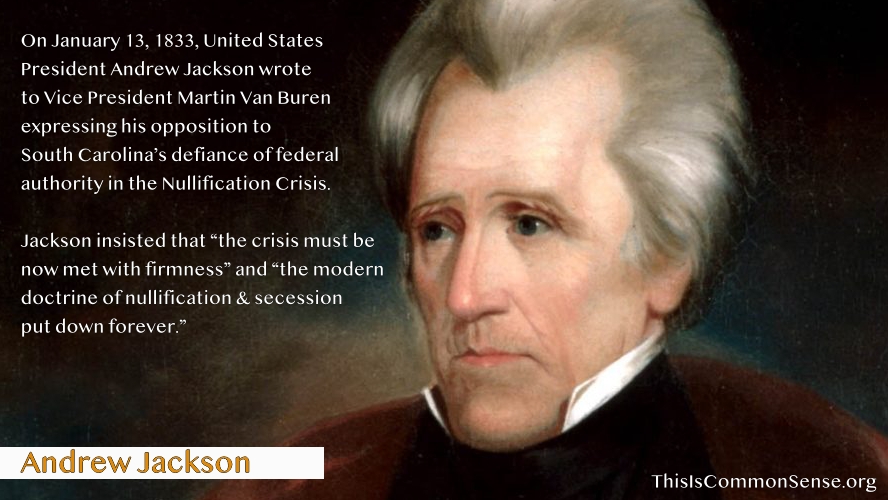
On January 13, 1833, United States President Andrew Jackson wrote to Vice President Martin Van Buren expressing his opposition to South Carolina’s defiance of federal authority in the Nullification Crisis. Jackson insisted that “the crisis must be now met with firmness” and “the modern doctrine of nullification & secession put down forever.”
South Carolina had blamed protectionist high tariffs for the severity of the economic slump of the time, and Andrew Jackson’s compromise Tariff of 1832 was still too much special-interest “protectionism” for South Carolina, which threatened to nullify the law as unconstitutional. Jackson, though he agreed that the tariffs were too high, was still a nationalist at heart, having no sympathy for dissidents in the southern states. (The tariffs were designed by northern politicians to encourage the growth of industry. The belief among most economists of that time was that such high “protective” tariffs favored certain businesses at the expense of the general consumer as well as businesses not under the “protection,” particularly farmers and agricultural producers.) After the crisis subsided, tariffs were further reduced from the 1832 level, much lower than of 1828’s “Tariff of Abominations,” which had been signed into law by President John Quincy Adams — and written mainly by Martin Van Buren as a way to precipitate the election of Jackson.
Since the somewhat ambiguous end to the Nullification Crisis, the doctrine of state prerogatives — “states’ rights” — has been asserted by opponents of the Fugitive Slave Act of 1850, proponents of California’s Specific Contract Act of 1863 (which nullified the Legal Tender Act of 1862), opponents of Federal acts prohibiting the sale and possession of marijuana in the first decade of the 21st century, and opponents of implementation of laws and regulations pertaining to firearms from the late 1900s up to 2013. State opposition to ObamaCare has also recently conjured up the issue.
On January 13, 1898, Émile Zola’s J’accuse exposed the Dreyfus affair.
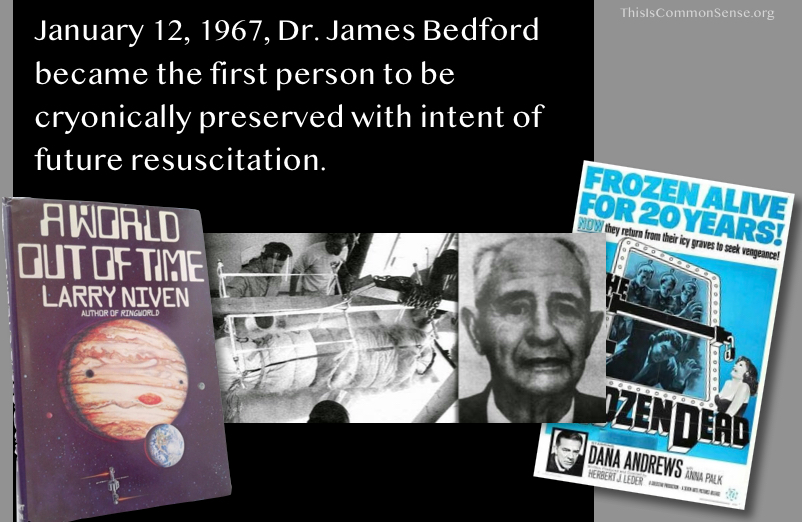
January 12, 1967, Dr. James Bedford became the first person to be cryonically preserved with intent of future resuscitation.
Cryogenic preservation for future revival of brain and somatic function has been a concept often used in science fiction, such as in the 1966 grade B horror film The Frozen Dead and the 1976 novel A World Out of Time — the latter in which author Larry Niven dubs the recipients of such treatment “corpsicles.”
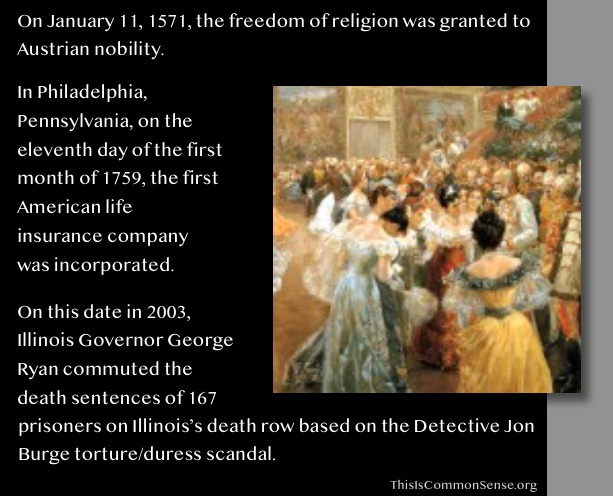
On January 11, 1571, the freedom of religion was granted to Austrian nobility.
Two years earlier, the first recorded lottery in England was held.
In Philadelphia, Pennsylvania, on the eleventh day of the first month of 1759, the first American life insurance company was incorporated.
On January 11, 1935, Amelia Earhart became the first person to fly solo from Hawaii to California.
On this date in 2003, Illinois Governor George Ryan commuted the death sentences of 167 prisoners on Illinois’s death row based on the Jon Burge torture/duress scandal.
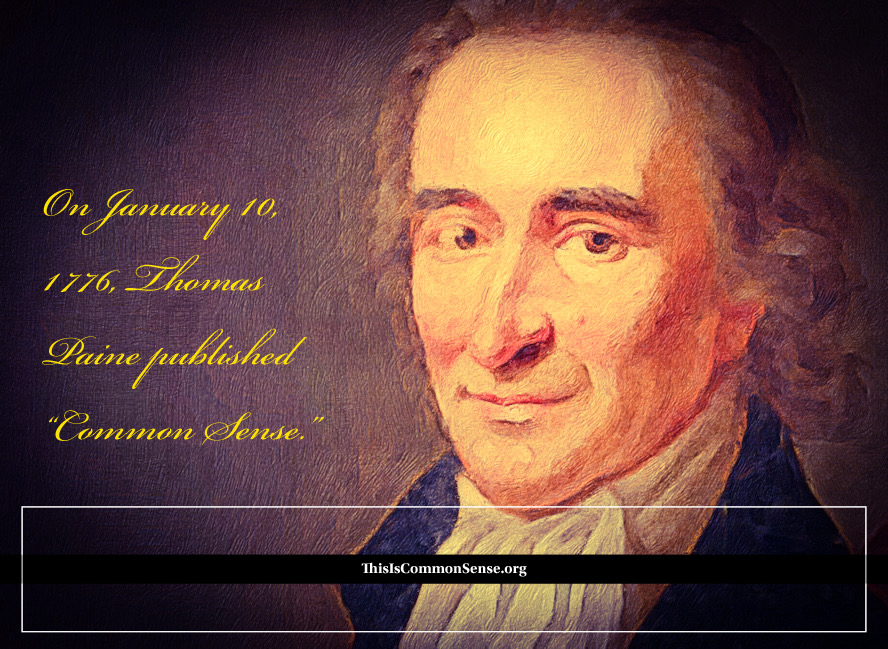
On January 10, 1776, Thomas Paine published Common Sense.
You can read this classic on this site’s library.
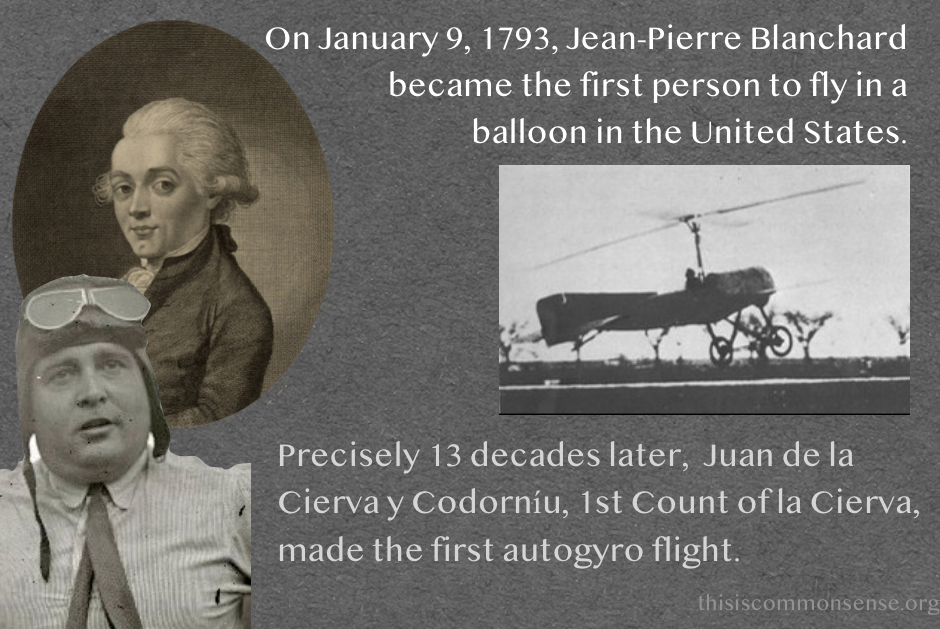
On January 9, 1793, Jean-Pierre Blanchard became the first person to fly in a balloon in the United States.
Precisely 13 decades later, Juan de la Cierva y Codorníu, 1st Count of la Cierva, made the first autogyro flight.